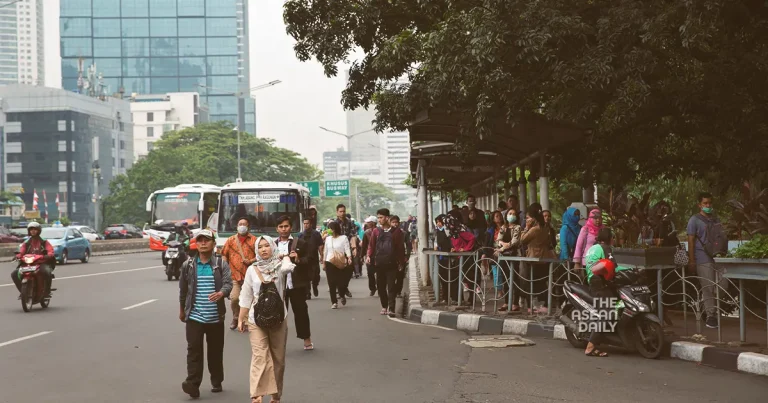27-5-2024 (JAKARTA) In a rapidly evolving global landscape, emerging markets such as India and Indonesia are poised to benefit from their demographic prowess, as populations in these nations continue to grow at a steady pace. Investment giants Fidelity International and BlackRock Investment Institute are zeroing in on these two Asian powerhouses, recognizing the potential that their burgeoning demographics hold for future economic growth.
The investors’ focus on India and Indonesia is fueled, in part, by the anticipated boom in infrastructure spending, which bodes well for the countries’ economic trajectories. Coincidentally, both nations held elections this year, showcasing their ambition to transition into major economic forces, with their dynamic populations serving as a key strength.
These two nations stand out at a time when rapid aging has plagued their regional peers, including China. India’s historic milestone of surpassing China as the world’s most populous nation in mid-2023 unleashed a rush to identify potential winners in the South Asian nation’s stock market.
BlackRock’s analysis reveals a positive correlation between a country’s working-age population growth and share-price valuations. Meanwhile, Fidelity sees the financial sector as a key beneficiary, as credit needs grow for both corporates and consumers.
“India and Indonesia’s labour forces are young — with demographic dividends that far outshine some of the largest economies in the neighborhood,” said Ian Samson, a fund manager at Fidelity in Singapore. “All companies big and small require financing. This in part explains why bank stocks generally correlate with GDP growth in emerging markets.”
According to World Bank data, India and Indonesia are projected to see population gains of at least 10% from this year by 2040, while China is likely to experience a nearly 4% shrinkage.
However, a more crucial metric is the change in the working-age population, defined as those between 15 and 64 years old. Even before China’s historic overall population decline, its working-age cohort had been shrinking for years, while India’s is the youngest among major economies.
A faster increase in the working-age group typically translates into higher future earnings growth, according to BlackRock Investment Institute strategists led by Jean Boivin. They noted in March that migration, greater labour-force participation, and automation are also factors at play.
The demographic dividend forms part of the optimism that has fueled gains in the two stock markets, alongside a slew of idiosyncratic factors, including hopes for a market-supportive election outcome.
The Nifty 50 Index, trading at record levels, is set to notch nine-straight years of gains if the trend holds. The Jakarta Composite Index touched an all-time high in March.
Analysts emphasize that structural reforms to reduce regulatory red tape, enhance job market flexibility, and facilitate foreign investment are essential for economies to capitalize on the demographic tailwind.
“Ultimately, the growth equation is employment times productivity,” said Fidelity’s Samson. “The solid structural reforms we have seen in both India and Indonesia will allow for sufficient job creation to benefit from the demographic dividend.”
While progress has been made, more needs to be done. Indonesia’s President-elect Prabowo Subianto, who takes office in October, aims to achieve 8% annual economic GDP growth despite the nation’s track record falling far below that.
Investors are watching whether state governments in India will follow through with implementing labour, land, and other policy changes that have been passed at the national level. Should Prime Minister Narendra Modi’s party win a slimmer majority in the polls, his plans for more extensive reforms will face hurdles, and financial market volatility may rise.
For investors of sovereign debt, the age-dependency ratio — which shows the ratio of those considered too old or too young to work — and fiscal burden are among metrics to consider for long-term investment.
Global funds have poured $5.5 billion into India’s bonds this year on index-inclusion prospects, according to Bloomberg data. Investors took comfort that India’s interim budget announced in February focused on infrastructure spending instead of populist policies ahead of the general election that began in April.
In comparison, international investors have pulled out $1.8 billion from Indonesia’s notes as the incoming administration’s pledges to boost spending raised concerns about fiscal health.
“Aging population increases the cost of healthcare and pensions, with developed-market economies having more comprehensive social benefits as compared to most EM economies,” said Sanjay Shah, a director of fixed income at HSBC Global Asset Management. “In EM economies, the burden of pension plans may be more staggered and less fixed benefit oriented,” thereby reducing the state funding burden, Shah said.




